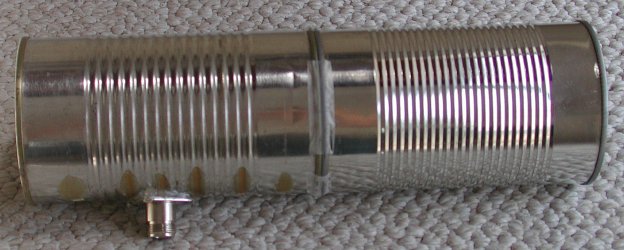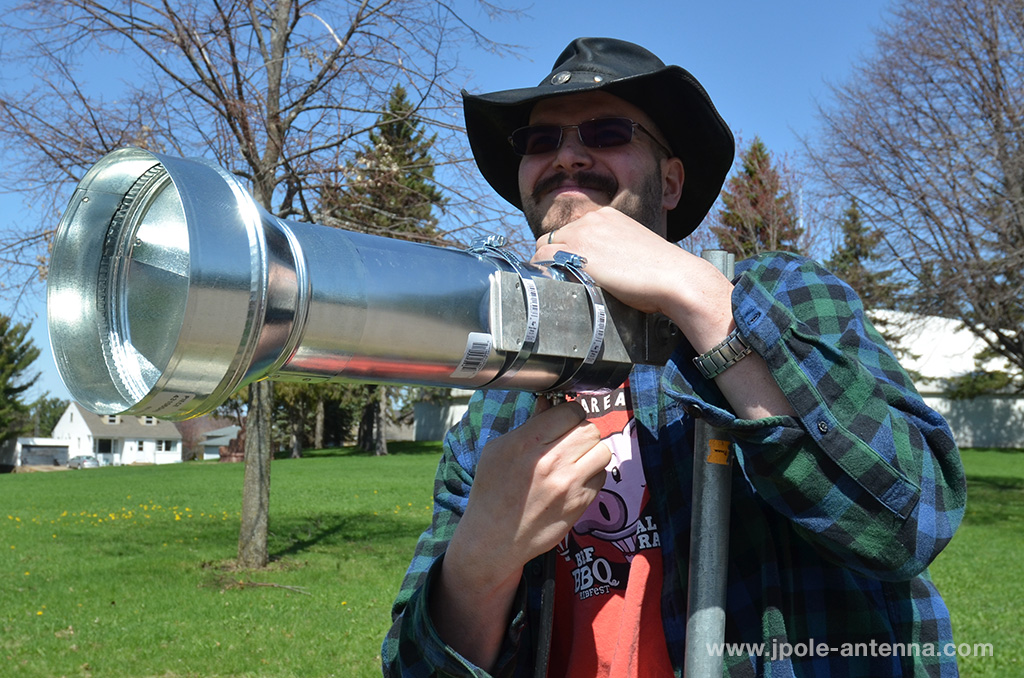
 But if the antenna is too short (resonates above your desired frequency) then it's a little more trouble to add wire to each leg to bring down its frequency of resonance where you want it. Note: To avoid cutting the wire, I usually just fold back each end of the antenna wire on itself and tape it tight if it's insulated wire - or twist it back on itself if you are using bare wire. If the antenna is too long (resonates below your desired frequency) then it's not a problem: you just trim each leg a little at a time until you reach lowest SWR. NOTE: if you start by giving the calculator your *desired* frequency of operation, the inverted V - when installed in its final position - may be still end up too short or too long, depending on the environmental conditions mentioned above. A good, efficient antenna has a length of a quarter of the wavelength. The influence of the ground conductivity and dielectric constant becomes an increasing factor. Just do the calculation of the wave length. The resonant frequency of the inverted V is lowered (see the theory behind this at the bottom of this page). As the two sections of the dipole are lowered below the feed point, the angle between the two legs decreases: The angle below the two sections of a horizontal dipole is 180 degrees. In the case of the inverted V we must add - to the list of environmental variables influencing the half-wave dipole - the angle between the two legs of the inverted V. It is adjusted to take into account the special characteristics of the inverted V. The formula used by the calculator to compute the wire lengths for the inverted V is based on the formula for a half-wave dipole. Will give you some leeway to trim the wire ends back if the inverted V resonates too low for your purpose when installed in its final position.
But if the antenna is too short (resonates above your desired frequency) then it's a little more trouble to add wire to each leg to bring down its frequency of resonance where you want it. Note: To avoid cutting the wire, I usually just fold back each end of the antenna wire on itself and tape it tight if it's insulated wire - or twist it back on itself if you are using bare wire. If the antenna is too long (resonates below your desired frequency) then it's not a problem: you just trim each leg a little at a time until you reach lowest SWR. NOTE: if you start by giving the calculator your *desired* frequency of operation, the inverted V - when installed in its final position - may be still end up too short or too long, depending on the environmental conditions mentioned above. A good, efficient antenna has a length of a quarter of the wavelength. The influence of the ground conductivity and dielectric constant becomes an increasing factor. Just do the calculation of the wave length. The resonant frequency of the inverted V is lowered (see the theory behind this at the bottom of this page). As the two sections of the dipole are lowered below the feed point, the angle between the two legs decreases: The angle below the two sections of a horizontal dipole is 180 degrees. In the case of the inverted V we must add - to the list of environmental variables influencing the half-wave dipole - the angle between the two legs of the inverted V. It is adjusted to take into account the special characteristics of the inverted V. The formula used by the calculator to compute the wire lengths for the inverted V is based on the formula for a half-wave dipole. Will give you some leeway to trim the wire ends back if the inverted V resonates too low for your purpose when installed in its final position. 

Than that of a dipole at the same desired frequency of operation. connect direct to main router from ISP.Calculator above will give you a wire length for the inverted 'V' which will be about 4% shorter It is very clear to me, you know what you are doing, on the wifi matter, and by your posts I read, you know, but if there is a complex set up network behind the 7510 do not connect to switches or Mikrotiks etc.

DD today is something you have to know what you are doing, the Wiki is outdated, al the new builds are on the forum, and its really complicated, I personally dont use it, I use OpenWrt its the best platform I have found, that said, DD is not that bad, sometimes there are issues in the forum that do not belong to Tp-link devices, a link between 2- 7510s AP-Client its like laying a invisible Cat5 cable, there is no Nat, or DHCP involved, I have seen issues where QOS on main router is the issue and so on.








 0 kommentar(er)
0 kommentar(er)
